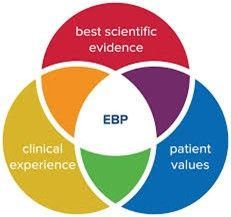Putting the Strategy in Strategic Planning
Strategic planning should not be a task behavioral health organizations do only to satisfy regulatory concerns. True, agencies such as the Council on Accreditation (COA) and CARF require that organizations have a strategic plan. And as a result, many of these agencies do so, at the last minute. Six months, three months before, to fulfill their obligations for accreditation. But shouldn’t the purpose of having an organization, whether large or small, be to follow a path and purpose?
When a company engages in strategic planning, they evaluate the past, forecast the future, and develop the path forward. According to famous Harvard University Business Professor Clayton Christensen, "Most people think of strategy as an event, but that’s not the way the world works. When we run into unanticipated opportunities and threats, we have to respond. Sometimes we respond successfully; sometimes we don’t. But most strategies develop through this process. More often than not, the strategy that leads to success emerges through a process that works 24/7 in almost every industry."
Strategic planning can be done for one year, three years, five year periods, and upwards. But once a plan is put into place, it will need tweaking. For example, most organizations have difficulty forecasting the future. This is because they cannot predict all trends or outcomes, external or internal, that occur (who could have predicted COVID, or the rise in telehealth?). BetterUp discusses how “strategic planning is the ability to think through ways to achieve desired outcomes.” Forbes discusses its five-step approach. The best a company can do is evaluate what occurred in the past year and how their accomplishments and challenges compared to what they predicted. For example, if a behavioral health organization thought they would increase client access by 10% and it only was 5%, they can examine the causes for the shortfall. Was it unrealistic projections, barriers to incoming clients, lack of community outreach, or a combination? Then as the organization looks to the future year, they can look at how they can more accurately develop a picture of their plan.
For a Board of Directors or leadership team, strategic planning helps them to assess needed resources, purchases, or other program requirements. For example, if an organization will be getting a grant to work with migrant children who do not speak English, they will have to identify staff who are bilingual and bicultural in the children’s language. This means increasing recruitment, onboarding, and training efforts, along with possible bonuses to entice and retain staff.
Strategic planning doesn’t always have to do with growth. Some organizations want to keep their basic services but improve them. For example, a residential facility wants to reduce restraints, runaways, and special incident reports. They will identify the causes of these events and develop plans to improve training, resources, and other collaborations to improve their treatment outcomes.
Whatever your organization plans to do in the upcoming year, it should have a strategy, a solid approach that means something to everyone from the leaders to the line staff. When all levels of the organization know the results of strategic planning, they come together and work as a unified force.
Praxes provides consulting for organizations on developing meaningful strategic plans and preparing for accreditation. For more information, please contact us.




